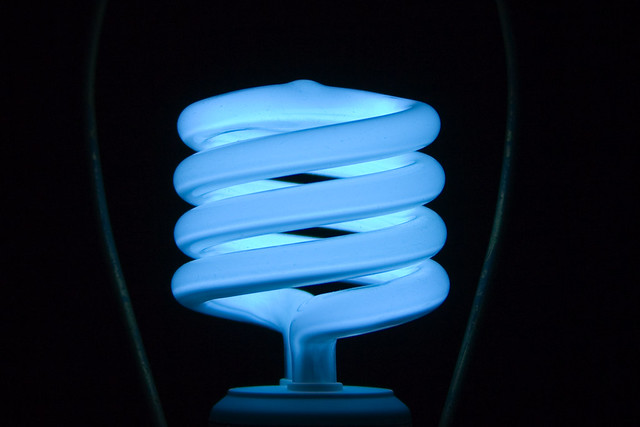 |
| Photo by AZAdam |
Switching from incandescent lighting to Compact Fluorescent Lamps (CFLs) is one of the simplest and most cost effective ways to save energy in your home. The easiest way to make the change is to start by replacing incandescent bulbs in just the 5 most used fixtures in your home. This will save you $60 on your energy bills each year! As other bulbs burn out, replace them with CFLs as well for even more savings.
Not every CFL is perfect for every fixture, but by putting just a little bit of thought into how you use them and what type you purchase you can avoid the common complaints about CFLs and enjoy high quality lighting at a low cost.
Not every CFL is perfect for every fixture, but by putting just a little bit of thought into how you use them and what type you purchase you can avoid the common complaints about CFLs and enjoy high quality lighting at a low cost.
Brightness
CFLs can take a moment to warm up to full brightness, so when you first switch a fixture to a CFL ignore it for a bit and then come back to judge whether you are getting the same output as you did with an incandescent. If you pick the right CFL, you shouldn’t notice a difference. Light output is measured in lumens, so if a 60 watt incandescent gives off 800-900 lumens, and a 13 watt CFL gives off 800-900 lumens, you will get the same brightness for ¼ of the energy use. Read the package when you buy new CFLs to make sure you are getting the desired output.
Light Quality and Color
Light Quality and Color
“Color temperature”, measured in Kelvins (K), lets you know what color of light a bulb will give off. A CFL with a color temperature of 2,700-3,000 K will have the same warm white light that you are familiar with from incandescent lighting, which also has a color temperature of 2,700-3,000 K. A color temperature from 3,500-6,000 K will be a brighter white light that looks more like daylight.
Dimmer Switches
Not all CFLs will work with dimmer switches, but there are special dimmable CFLs widely available. Just make sure to check the package before you buy to get the correct type.
Cost
Although quality CFLs can often cost a bit more than incandescents (a few dollars vs. $0.50), the savings over their lifetime make them the most cost-effective choice by far. The average incandescent has a maximum predicted lifespan of 1,000 hours, while the typical CFL can last a maximum of 15,000 hours. That means a 13 watt CFL uses 195 kWh of electricity in its lifetime, costing about $20 for energy over several years. Over the lifetime of one CFL, an incandescent bulb would rack up energy costs close to $90 and would need to be changed several times.
To prolong the life of your CFLs, avoid flipping them off and on too often. If you’re going to be out of the room for less than 15 minutes, it’s actually more efficient to just leave the lights on. Also, avoid extreme temperatures by not using CFLs outdoors, above stoves, or in enclosed fixtures, unless you purchase a CFL rated for those uses.
Disposal
Disposal
CFLs contain a tiny amount of mercury inside of them, the total amount measuring about the size of this period. One single CFL doesn’t pose much danger to individual health, but as more people take advantage of this efficient technology the mercury in all of our CFLs combined could pose a threat to our heath and environment if it isn’t properly contained. It’s easy to recycle CFLs, just save them in a safe place until the next time you are going to visit one of the recycling locations in Whatcom County. For more information on CFL recycling, locations, and how to safely clean up a broken lamp, check out this page.
No comments:
Post a Comment